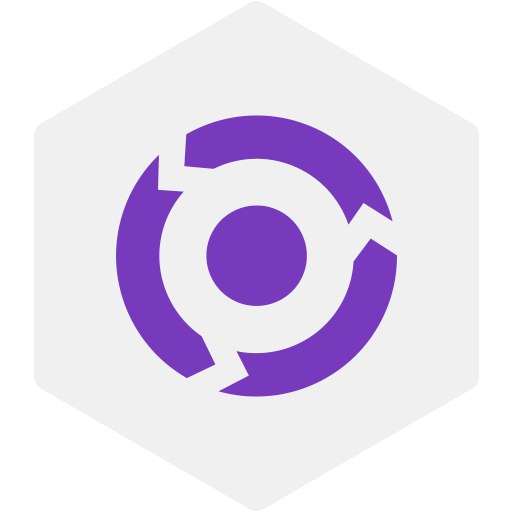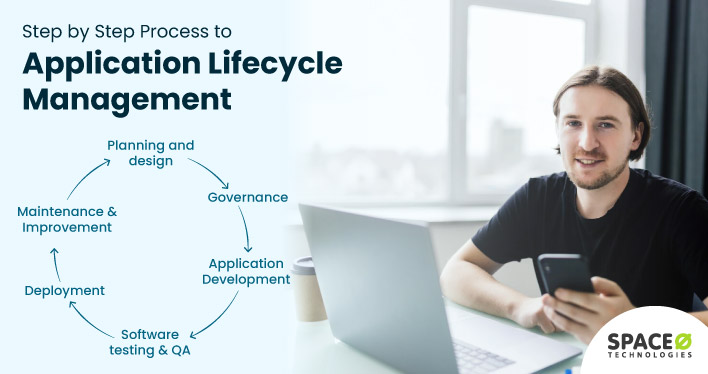Table of Contents
What is ALM(Application Lifecycle Management)?
ALM refers to the process of managing the entire lifecycle of software development, from planning and design to deployment and maintenance, using various tools and methodologies to ensure quality and streamline the process.
Why is ALM Important?
ALM plays a crucial role in ensuring the successful development and delivery of high-quality software applications.
Here are some reasons why ALM is important:
- Improves quality of application: ALM provides a structured framework for managing the development process, which helps ensure that all aspects of the application are thoroughly tested and evaluated at every stage. This leads to a higher quality application that is more reliable and better meets user needs.
- Increases application efficiency: By providing a comprehensive view of the entire application development process, ALM helps to identify and eliminate bottlenecks and inefficiencies, leading to faster development and deployment times.
- Provides better collaboration: ALM promotes collaboration among team members by providing a centralized repository for all application-related artifacts, such as requirements, design documents, and test cases. This helps ensure that all team members are working from the same information and reduces the risk of miscommunication and errors.
- Enhances visibility of the applications: ALM provides real-time visibility into the status of the application at every stage of development, allowing you to monitor progress and identify potential issues early on.
- Compliance and governance: ALM helps ensure that applications are developed in compliance with regulatory requirements and organizational governance policies, reducing the risk of legal or financial penalties.
ALM ensures the successful development, deployment, and ongoing maintenance of software applications. By providing a structured framework for managing the application development process, ALM ensures that applications are delivered on time, within budget, and meet your needs.
What is ALM Used for?
What is ALM (application lifecycle management) used for?
ALM can be used for:
- Managing the entire lifecycle of an application, from conception to retirement.
- Ensuring that an application is delivered on time, within budget, and meets required quality standards.
- Providing a structured approach to managing the various phases of development, including requirements management, design, coding, testing, release management, and maintenance.
- Streamlining development processes, reducing costs, and improving the quality of applications.
- Identifying and mitigating risks, improving communication and collaboration among team members, and ensuring that applications are aligned with business objectives.
- Helping teams to collaborate effectively, manage dependencies, and ensure that all stakeholders are aligned throughout the development process.
- Providing tools and processes to support ALM activities, such as version control, build management, and test management.
- Enabling traceability and audibility throughout the application development process.
- Facilitating continuous integration and continuous delivery (CI/CD) by automating key tasks and integrating with other development tools and processes.
- Supporting agile and DevOps methodologies by providing a framework for managing the entire application lifecycle in a fast-paced and collaborative environment.
Let’s understand the six stages of ALM that are crucial for developers.
6 Stages of the Application Lifecycle Management
An application lifecycle management comprises six stages. The entire lifecycle together helps implement agile software development. Let’s check out each stage of the application life cycle management in detail.
Planning and Design
The first stage involves gathering the requirements for the app development. Connect with all the stakeholders for the application to decide the purpose, business objectives, and need for the application. You must create the user stories for the application during the initial planning phase.
Simultaneously, you can start working on the budget estimate and timeline for app development. You might have to think through the wireframes and prototype design based on the user stories you have created. During this phase, the development team will get an insight into the detailed tasks to complete.
For example, when you are creating a healthcare application to improve appointment schedules, you will have two user stories- the care provider and the user. The prototype design will need to have screens for both the patient and the care provider.
Governance
During the planning phase of an application, it’s crucial to consider compliance management and application governance requirements to ensure seamless data movement within the application. This involves initiating data security measures and identifying important compliances, such as HIPAA for healthcare applications, which assures patients that their data will remain safe and adhere to data policies.
Application Development
Once you have identified the tech stack, determined the compliances, and planned the backend, it is time to start coding your application. You will need to create the coding to ensure smooth communication and interaction between the user screen and the backend. It is equally important in the software development process to implement the database solution for the application. The developer will also create reusable software components for accelerated deployment.
Taking the healthcare application example, you might need to ensure that when the user picks a date and time, the schedules are booked in the backend. The application should send a message confirming the booking to the patient.
Software Testing & Quality Assurance
The application development is incomplete without testing and quality assurance. At the end of the development stage, the testing team will create a standardized environment to assess the application. While the continuous integration in agile development ensures a test-driven environment. You will need to test the entire system with the integrated modules at the end of the app development. It will help identify the performance, scaling, and usability of the application.
For example, if the application has been developed for in-person health checkups alone, and the care provider takes up video conferencing and chat, they can test the application and get the developer to add them.
Deployment
Before the deployment, the team will optimize the application. It is during this phase that the application’s future is also determined. Release management is defined for future requirement management and to identify ways in which new feature additions will be managed. This is an important part of the application’s lifecycle as it can provide the base to incorporate feedback and enhance the application.
Maintenance & Continuous Improvement
It is very important to maintain the application and introduce effective management. New updates and managing upgrades are a part of the maintenance schedule. This is the stage when developers will employ the feedback and enhance the app’s ability.
Have a Unique Mobile App Development Idea?
Share your software needs, and we’ll discuss, validate, and elevate your idea with our technical consultants.

Let us understand the 7 key benefits of why your software development process requires the ALM framework.
7 Benefits of Application Lifecycle Management
Application lifecycle management is crucial for putting out quality solutions within the predetermined budget and as per the timeline schedules. Here are the top ALM benefits for software development teams.
- Helps the enterprises with thorough planning and effective requirements management for their project
- It ensures strict and quality test management that helps improve the quality of the resources
- Enhances the software development life cycle by offering a well-defined framework that acts as a guide
- The development speed and agility of the software application development enhances with this framework
- It ensures proper project management as the people, and tools integrate to manage the entire process
- DevOps streamlines communication and collaboration that allows improved adherence to compliances and quality software solutions.
- It offers greater visibility to the software development team.
8 Best Application Lifecycle Management Software and Tools
Application lifecycle management tools can enhance application planning, development, and tracking management. They can help businesses with monitoring the application from planning to deployment. It can also help with sorting files and recording the changes.
Here are all the things that the ALM tools provide:
- Better version control
- Real-time communication and collaboration between teams
- Proper estimation and planning of application development
- Complete test management and quality assurance for safe releases
- Source code management
- Automated deployment of the applications
- Complete maintenance and support
With these tools, the project developers can identify the requirements, create user stories, identify coding errors early, avoid delivery delays and streamline application delivery. It can also help discover the key features and compliance requirements for the application for better planning and development. It can also help with controlled change management.
Here are all the popular ALM project management tools you can use:
| Logo | ALM Tool | Description |
|---|---|---|
 | Jama Software | This tool helps project managers determine the requirements, provides quality assurance, and implements risk analysis for better control |
 | Visure | This tool helps the different teams and project managers to collaborate and streamline the processes related to acceptance testing, software configuration management, and resource management to enhance the project lifecycle. |
 | Atlassian Jira | This is a complete ALM tool that helps businesses unlock the features and identify best practices that help with agile development. |
 | Tuleap | This ALM tool allows businesses to enhance agile software development, design the project, and requirement management. |
 | Basecamp | This is an effective project management software that helps streamline the ALM process and track the project status |
 | SpiraTeam | This tool can integrate with your developer IDEs to help project leaders track, view, and manage the requirements and tasks for the project |
 | Helix ALM | This ALM system helps manage tasks, analyze and document the defects and ensure complete deployment control. |
 | Micro Focus ALM | This tool allows businesses to govern the different development activities and implement well-audited testing processes. |
Now let’s learn how does the application lifecycle management differ from the software development lifecycle?
ALM vs SDLC: 3 Key Differences
Here’s a detailed look at ALM vs SDLC
| Factors | ALM | SDLC |
|---|---|---|
| Definition | This is a set of processes that connects the key stakeholders through end-to-end application management including planning, development, deployment, and decommissioning of the software. | This is a set of processes that helps the software development plan, develop, test, and deploy the application. |
| Focus | It is focused on all aspects of the application. | It is focused on the application development phase. |
| Stages |
|
|
Let’s take a look at the difference between Application lifecycle management and Product lifecycle management.
ALM vs PLM: 3 Core Differences
| Factors | ALM | PLM |
|---|---|---|
| Definition | This is the end-to-end project planning approach that accounts for the design, development, deployment, and retirement of an application. | The set of processes that helps a business bring a physical product to the market. |
| Application | It is used as a governing framework for software applications. | It is used as a governing framework for physical products. |
| Industry | Applicable for the IT industry. | Defined for the mechanical and automotive industries. It is also applicable to the manufacturing industry. |
Two Important Methods of Application Lifecycle Management
The way to a successful application lifecycle management is by choosing the appropriate software development methodology. Here are the methodologies that are prominently used- Waterfall and Agile. Including DevOps to your methodology can also improve the outcome substantially.
Waterfall Methodology
Businesses that plan their ALM with waterfall methodology implement traditional development services. The app testing occurs at the end of the development. This is a sequential development process, where the next phase occurs at the end of the first one.
Agile Methodology
This methodology breaks the software development plan into smaller and shorter iterations. At the end of an iteration, the developer will release a small and shippable software that is tested for the different components. The method is used for continuous development and faster deployment.
Note: In the current agile methodology, most companies consider implementing DevOps which can help translate their ideas into a proper application.
Want to Hire Experienced App Developers?
Space-O Technologies has an experienced app development team that has built top app solutions like Glovo, Bevvy, and NFC Jewellery App
Frequently Asked Questions About ALM
How to choose the best ALM tool for your project?
When selecting an ALM (Application Lifecycle Management) tool for your project, consider the following factors: project size and complexity, team size and location, integration features with other tools, ease of use, cost, and scalability. Aside from that, experimenting with various ALM tools and researching different functionalities will assist you in taking a decision.
Which methodologies work best with ALM?
The best methodologies for application lifecycle management would be agile with DevOps. This can enhance the ability to create a test-driven environment. You can create smaller iterations, and test them through the CI/CD pipeline.
Do software companies need application lifecycle management tools?
Yes, software development companies need application lifecycle management (ALM) tools, as they provide a clear plan for how software is built. Using an ALM tool helps companies in project management, version control, requirements management, bug tracking, testing, and release management as well as estimating resources and time required for the development. So, ALM tools help improve productivity and the quality of software developed.
Ready to Implement ALM for Your Next App?
Application lifecycle management is an incredible development approach that also considers the future of the application. With ALM, developers can release consistent and high-quality applications into the market with greater speed. It offers several key benefits that can translate your idea into a full-fledged app solution.
If you are planning an incremental and test-driven approach for your next application, you can consider ALM. There are several tools that can help through the different stages of development and planning. As a leading mobile application development company, Space-O Technologies has delivered capable solutions with ALM. You can look through our portfolio and resources to learn more about how we implemented ALM.



